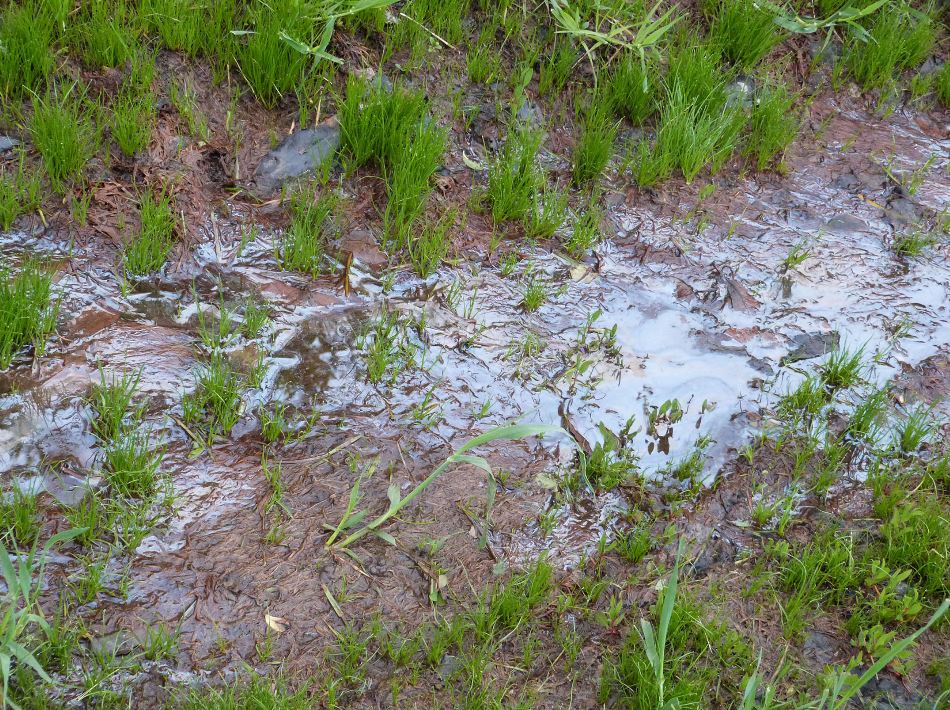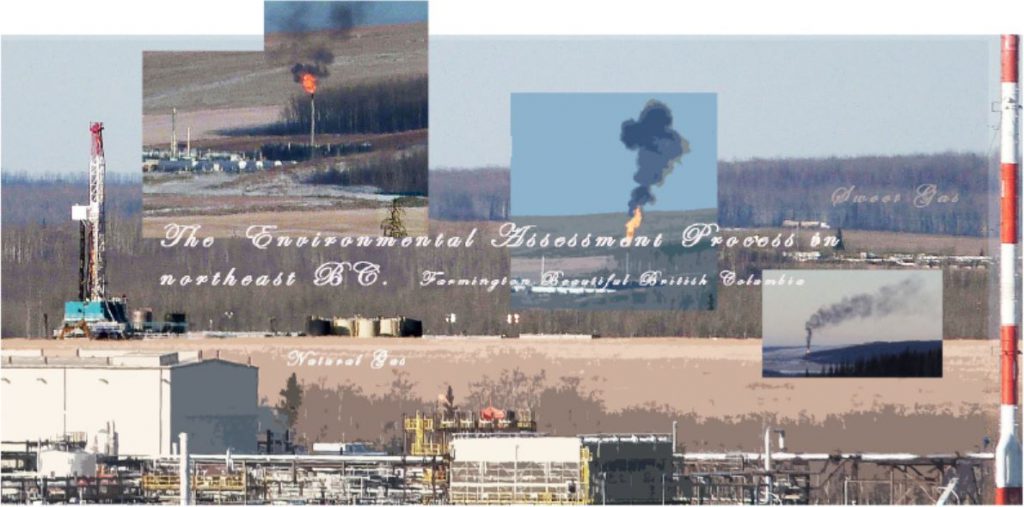The Mutated Virus Is a Ticking Time Bomb, There is much we don’t know about the new COVID-19 variant—but everything we know so far suggests a huge danger by Zeynep Tufekci, Dec 31, 2020, The Atlantic
A new variant of the coronavirus is spreading across the globe. It was first identified in the United Kingdom, where it is rapidly spreading, and has been found in multiple countries. Viruses mutate all the time, often with no impact, but this one appears to be more transmissible than other variants—meaning it spreads more easily. Barely one day after officials announced that America’s first case of the variant had been found in the United States, in a Colorado man with no history of travel, an additional case was found in California.
There are still many unknowns, but much concern has focused on whether this new variant would throw off vaccine efficacy or cause more severe disease—with some degree of relief after an initial study indicated that it did not do either. And while we need more data to feel truly reassured, many scientists believe that this variant will not decrease vaccine efficacy much, if at all. Health officials have started emphasizing the lack of evidence for more severe disease.
All good and no cause for alarm, right? Wrong.
A more transmissible variant of COVID-19 is a potential catastrophe in and of itself. If anything, given the stage in the pandemic we are at, a more transmissible variant is in some ways much more dangerous than a more severe variant. That’s because higher transmissibility subjects us to a more contagious virus spreading with exponential growth, whereas the risk from increased severity would have increased in a linear manner, affecting only those infected.
Increased transmissibility can wreak havoc in a very, very short time—especially when we already have uncontrolled spread in much of the United States. The short-term implications of all this are significant, and worthy of attention, even as we await more clarity from data. In fact, we should act quickly especially as we await more clarity—lack of data and the threat of even faster exponential growth argue for more urgency of action. If and when more reassuring data come in, relaxing restrictions will be easier than undoing the damage done by not having reacted in time.
To understand the difference between exponential and linear risks, consider an example put forth by Adam Kucharski, a professor at the London School of Hygiene & Tropical Medicine who focuses on mathematical analyses of infectious-disease outbreaks. Kucharski compares a 50 percent increase in virus lethality to a 50 percent increase in virus transmissibility. Take a virus reproduction rate of about 1.1 and an infection fatality risk of 0.8 percent and imagine 10,000 active infections—a plausible scenario for many European cities, as Kucharski notes. As things stand, with those numbers, we’d expect 129 deaths in a month. If the fatality rate increased by 50 percent, that would lead to 193 deaths. In contrast, a 50 percent increase in transmissibility would lead to a whopping 978 deaths in just one month—assuming, in both scenarios, a six-day infection-generation time.
Transmissibility increases can quickly—very quickly—expand the baseline: Each new infected person potentially infects many more people. Severity increases affect only the infected person. That infection is certainly tragic, and this new variant’s lack of increase in severity or lethality thankfully means that the variant is not a bigger threat to the individual who may get infected. It is, however, a bigger threat to society because it can dramatically change the number of infected people. To put it another way, a small percentage of a very big number can easily be much, much bigger than a big percentage of a small number.
I dismissed the news initially because viruses mutate all the time and there have been too many baseless “mutant-ninja virus” doomsaying headlines this year. The exaggerated, clickbaity alarmism makes it harder to discern real threats from sensationalism. Given the constant reality of mutation, genomic variants should be considered innocent until proved guilty. Even an increase in the proportion of cases attributable to a particular variant is not definitive proof of an evolutionary advantage.
However, as data on the new variant roll in, there is cause for real concern. Trevor Bedford, a scientist at the Fred Hutchinson Cancer Research Center and a board member for the Covid Tracking Project at The Atlantic, points out that infections from the new variant are increasing very rapidly among the population in the U.K. Bedford also notes that this new variant seems to have a higher secondary-attack rate—meaning the number of people subsequently infected by a known case—compared with “regular” COVID-19. Finally, the new variant seems to result in higher viral loads (though this is harder to be sure about as viral loads can be affected by sampling bias and timing). As Kucharski told me, all of this does not rule out other explanations. This increased transmission could be due to chance or founder effects—meaning one variant just happened to get somewhere before the other variants and then got “lucky”; it was early, rather than more transmissible. It could be due to changed behavior among people—quarantine fatigue, less masking—leading to more rapid spread. However, given the current evidence, along with the specifics of the mutation, it’s getting harder to assume that those other explanations are more likely than the simple proposition that this is truly a more transmissible variant.
So how much more transmissible? We aren’t completely sure yet, but the initial estimates from the data suggest that this variant could be about 50 to 70 percent more transmissible than regular COVID-19. To make matters thornier, we aren’t yet exactly sure why it’s more transmissible, though reasonable theories are already being tested. This variant, now called B.1.1.7, has “an unusually large number of genetic changes, particularly in the spike protein,” which is how the virus gains entry into our cells. The new variant may be better at eluding our immune response and replicating, or be able to better bind to locations in our body more conducive to infecting others, but that is all speculative for the moment.
This uncertainty in understanding the variant’s exact mechanisms means that we don’t know if our existing tools—masks, distancing, and disinfecting—are as effective as they were compared with an identical scenario with the regular variant. To be clear: The variant is still a respiratory virus, so the basic tools will not change, and they will all continue to work. In fact, they have become more important, but we may need to be stricter—less time indoors, better masks, better ventilation, more disinfection of high-touch surfaces—to get the same bang for our protective buck. It may be a small difference, or not. We don’t know. We won’t know for a while.
Given that this new variant is already here in America, are we too late? No, but we are on our back foot. The United States does not have extensive genomic surveillance, or a rapid turnaround with what surveillance it has, so in some ways, we are flying without a map. We have some indications that the variant is—so far—probably relatively rare in the United States.
This could, of course, change extremely quickly, before we can even detect that change, but that highlights the importance of early action. In addition to the threat of exponential growth, we must remember that this pathogen is quite overdispersed—meaning some people seem to cause many infections, while many do not transmit it at all (though these ratios may change as well). Early on, there was a lot of hand-wringing about why some European cities were very badly hit while others were spared—spared only until later, it often turned out—despite similar policies. The answer could be just a bit of bad luck and a few weeks of delay: For exponential processes, small initial differences can mean gargantuan differences in the long run, and we are not helpless.
We can and should deploy whatever weapons we have in our arsenal, as soon as possible. If public-health officials can accelerate our ability to detect the new variant, they must. “You could imagine case-based interventions specifically targeting the early variant-transmission chains,” Bedford told me. “I wouldn’t expect to contain them, but I could imagine buying a week or two.”
A week or two may not seem like a lot, but combined with other aggressive public-health measures, we may actually gain a few additional weeks. Maybe all of that could delay this new variant’s widespread establishment until February or even March.
This moment is somewhat similar to America’s initial COVID-19 surge and shutdown in March. We need to once again talk about the importance of flattening the curve. We need to again preserve hospital capacity, so our fatality rate doesn’t increase. But this time around, we can be a lot more hopeful: We need to flatten the curve because delaying potential infections just a few weeks or a month can make a tremendous difference when highly effective vaccines are being rolled out.
We are in a race against time, and the virus appears to be gaining an unfortunate ability to sprint just as we get closer to the finish line. Although the initial rollout of the vaccines has been slow, it is expected to increase rapidly. The U.S. may have 50 million to 100 million people vaccinated as early as March. That is a huge difference, one that could save many lives, especially since we also have perhaps that many people with some degree of postinfection immunity.
Here’s how to think about it: Vaccinated people are a lot less likely to get sick in the first place. One hundred million vaccinated people will mean 100 million people with much less (or hardly any) risk for any symptomatic COVID-19, especially severe disease. That’s an enormous gain.
Craig Spencer: My emergency room is full of patients no vaccine can help
But that’s not all. Vaccines benefit not just the vaccinated, but potentially everyone else, too. Fewer people symptomatically sick with a contagious virus means fewer sick people infecting even more people. Every indication we have suggests that vaccinated people will also transmit less—how much less is still being studied, but the difference may well be substantive. The mRNA vaccines (both already approved in the United States) cut down symptomatic disease by about 95 percent. We already know that people who never develop symptomatic disease are a lot less likely to transmit COVID-19. (Note the difference between people who are truly asymptomatic and people who are just about to get sick—presymptomatic—but are highly infectious.) In a preliminary study, the Moderna vaccine was found to even prevent two-thirds of asymptomatic infections. Vaccinated people are thus not only much, much less likely to get any disease; they appear much less likely to get even a silent, asymptomatic infection. Although we need more data to be sure, all of this strongly suggests that vaccinated people will also transmit less. The fewer people there are to efficiently transmit a pathogen, the harder it is for that pathogen to spread.
Now that we have effective vaccines, flattening the curve into the future also means obliterating the curve. Dylan Morris, a postdoc at UCLA who studies virus transmission and quantitative biology of infectious disease, and a co-author of a preprint paper studying the impact of timing on nonpharmaceutical interventions—such as reducing mobility and contacts, wearing masks, distancing, and avoiding indoor gatherings—told me that “delaying cases has always been valuable, but right now it is especially valuable. Buying even a bit of time to ramp up vaccination could avert a great deal of mortality and morbidity.” Every COVID-19 death is tragic, but with the existence of several effective vaccines, every death is now technically preventable too.
Even without a vaccine, Morris said, knocking down the virus through temporary suppression can be valuable even though the virus will grow again, precisely because of these exponential effects. The same percentage growth amounts to a much smaller number of infected people when the baseline number is much smaller. Bringing the baseline level of contagion down also allows for safer experimentation: What happens if we relax X a bit? What restrictions work best? Which ones are most sustainable? If cases are growing from a very large base number, however, that means the state of the world is changing very quickly, so small mistakes are magnified. As Morris said, “You can’t finesse the steep part of an exponential.” He noted that throughout the pandemic, we bemoaned the absence of silver bullets while underestimating the value of crude hammers. But now we are in a different situation: We do have a silver bullet—vaccines—just as we have this new threat thrown at us. How we react in the next few weeks will matter immensely.
Imagine it this way: There is a tsunami heading our way, and we are ferrying people to a high point. Everyone we transport up to the top is safe, but even better, they can also help other people get to safety (the exponential desirable effect of the vaccine). The reverse is also true, however: Everyone we leave behind also pulls down more people (the exponential unwanted effect of increased transmissibility). And the whole process is very sensitive to when we start; it’s much easier in the beginning but gets nearly impossible as the wave grows higher and gets closer. With this variant, at least in the United States, we are likely at the beginning, or near the beginning.
All this means that the speed of the vaccine rollout is of enormous importance. There are already worrisome indicators of slow rollout. Vaccination of a broad population, not vaccines in and of themselves, saves lives, and epidemics are fought with logistics and infrastructure. We should put every bit of energy, funding, and relentlessness into vaccinating as many people as possible as quickly as possible.
Meanwhile, the United States was reportedly planning to hold back half the vaccine it has in freezers as a hedge against supply-chain issues, and some states may be slowed down by murky prioritization plans. Scott Gottlieb—the former FDA chief and a current board member of Pfizer—has argued that the U.S. should also go ahead with vaccinating as many people as possible right now and trust that the supply chain will be there for the booster. Researchers in Canada—where some provinces decided to vaccinate now as much as possible without holding half in reserve, and will administer the booster with future supplies—estimate that this type of front-loading can help “avert between 34 and 42 per cent more symptomatic coronavirus infections, compared with a strategy of keeping half the shipments in reserve.” (Note that this strategy, which is different from the one the United Kingdom just announced it will adopt in prioritizing the first dose, does not even necessarily involve explicitly changing booster timing protocols in order to maximize vaccination now; it just means not waiting to get shots into arms when the vaccines are currently available.) These were already important conversations to have, but given the threat posed by this new variant, they are even more urgent.
Maybe—just maybe—this variant will turn out to be a false alarm, not nearly as transmissible as we feared. We will know soon enough. Our precautions will still be net positives. But if it is indeed much more transmissible, we may face a true tragedy: exponential growth with massive numbers of illnesses and deaths just as highly effective vaccines are being made available. We’ve had a year to learn—about the importance of early action, of acting decisively even in the face of uncertainty, of not confusing absence of evidence with evidence of absence. A year to learn to aim not for perfection in knowledge but for maximal impact even while considering the trade-offs. And most important, a year to learn to not wait when faced with threats with exponential dynamics but to act as early and as decisively as we can—and to adjust and tamper later, if warranted.
“Exponentials are so cruel that nobody wants to look them in the eye,” Morris told me. This is true, but averting our eyes doesn’t avert the outcomes. Each one of us is now counting on every person who serves the public—mayors, city-council members, health officials, nurses, FDA regulators, members of Congress, journalists—to speak up now, and to speak up loudly. We must insist on swift and aggressive action, along with more resources, in order to get this right. It is not too late. Many lives depend on what we do next.
Zeynep Tufekci is a contributing writer at The Atlantic and an associate professor at the University of North Carolina. She studies the interaction between digital technology, artificial intelligence, and society.
***
ENTER SUPER STUPID:
Alberta approves NHL games for Edmonton and Calgary, feds waive 14-day quarantine rule for players, staff, Regular season is set to begin on January 13, 2021 by The Canadian Press, Dec 31, 2020, CBC News
… In a separate statement Thursday, the federal government said it has issued an exemption to the mandatory 14-day quarantine period for NHL players and team staff returning to Canada for training camps under “national interest grounds.”
Daly said in an email to The Canadian Press that modified quarantine procedures for players and team staff entering the country are determined by provincial health authorities.
“Modified quarantine means different things in different markets,” Daly’s email read. ![]() Ya, modified as in if you’re rich or super rich, we’ll let you do what you like, including pissing on the rules, putting all Canadians at risk, likely to result in the death of many.
Ya, modified as in if you’re rich or super rich, we’ll let you do what you like, including pissing on the rules, putting all Canadians at risk, likely to result in the death of many.![]()
Comment to the CBC News article by Dave Arnold:
Millionaires playing for billionaires, thats what has become of Canada’s favourite sport.
![]() Canadian politicians are too cowardly and or corrupt to enforce the rules (or the law and it’s “rule”) when it comes to the rich, mega rich and polluting corporations. They (and too many of the judges they put on the bench to cater to the rich, mega rich and polluting corporations) let them piss and shit on the rules and law, and the rest of us.
Canadian politicians are too cowardly and or corrupt to enforce the rules (or the law and it’s “rule”) when it comes to the rich, mega rich and polluting corporations. They (and too many of the judges they put on the bench to cater to the rich, mega rich and polluting corporations) let them piss and shit on the rules and law, and the rest of us.
MEANWHILE, FOR ORDINARY (NON RICH) CANADIANS:
Former Red Deer long-term care employee charged with violating isolation rules after U.S. trip, The Public Health Agency of Canada contacted police on Oct. 19, prompting the RCMP investigation by Sammy Hudes, Jan 01, 2021, The Calgary Herald
A former Red Deer long-term care employee is facing a charge for failing to isolate after returning from the U.S. this fall.
Red Deer RCMP said in a news release on Thursday that the charge was laid under the federal Quarantine Act following an investigation conducted in collaboration with Alberta Health Services.
The health-care aide worked for the Extendicare Michener Hill long-term care home, according to Mounties. Their employment was terminated more than eight weeks ago following a probe by the operator.
Extendicare informed the Public Health Agency of Canada (PHAC) that the employee failed to isolate after travelling to the U.S., “in an effort to ensure the safety of the residents in their care,” according to RCMP.
PHAC then contacted police on Oct. 19, prompting the RCMP investigation.
“A comprehensive investigation was conducted which included witness evidence and judicial authorizations to obtain records,” RCMP stated.
“A charge has now been supported, and the accused has been served with a summons to appear in Red Deer Court on Jan. 26, 2021.”
Everyone entering Canada must isolate for 14 days under federal rules, due to the COVID-19 pandemic.
Violating those rules could result in penalties of up to $750,000 in fines and six months in prison.
“A staff member’s employment was terminated following an internal investigation, prompted by allegations that clear COVID-19 safety restrictions regarding travel were not followed,” an Extendicare spokesperson said in a statement.
“The issue was quickly reported to the authorities and Extendicare Michener Hill has cooperated fully with the RCMP in its investigation. The safety of our residents and staff is paramount and we take our responsibility to them, and their families, incredibly seriously. Any disregard for the rules in place to protect the people we care for will be met with a swift and severe response.”
***
Subject: How should This Person React To The Justice Faced By Rod Phillips And Tracy Allard??
Date: Fri, 1 Jan 2021 16:53:04 -0700
From: “Stewart Shields” email hidden; JavaScript is required
To: email hidden; JavaScript is required, email hidden; JavaScript is required, “Public Interest Alberta” email hidden; JavaScript is required, email hidden; JavaScript is required, email hidden; JavaScript is required
Cc: email hidden; JavaScript is required, Council of Canadians Jamian Logue email hidden; JavaScript is required, email hidden; JavaScript is required, email hidden; JavaScript is required, email hidden; JavaScript is required, email hidden; JavaScript is required, email hidden; JavaScript is required
How must this individual feel about high earning Government Ministers allowed to totally walk with her freedom and paycheque ensured and continue on as if no offense was ever committed? Neither Phillips or Tracy Allard will suffer the financial outcome the person who worked on the front lines of the Covid business must endure for her mistake?? Certainly the law in this case is far from being just— when either Rod Phillips –who remains as a Conservative MLA and Tracy Allard’s belly crawls to international destinations are considered?? The problem here is not that this Long Term Care Employee should go unpunished—but government employee who make these rules should surely lose to the same degree as a low wage employee of long term care—units? Why were Rod Phillips and Tracy Allard not reported by their respective Premiers to the RCMP—and have them investigated for similar crimes rather than have their Conservative Premiers dish out meaningless penalties that will not effect their standard of living??
Stewart Shields, Lacombe Alberta
Refer also to:
Imagine these popping up in your frac’d yard:



Study: Covid-19 outbreak risk in Italy: Role of chronic air pollution levels
“Regulated” frac’ing in Alberta and NEBC, Canada, near families, farms and communities:



